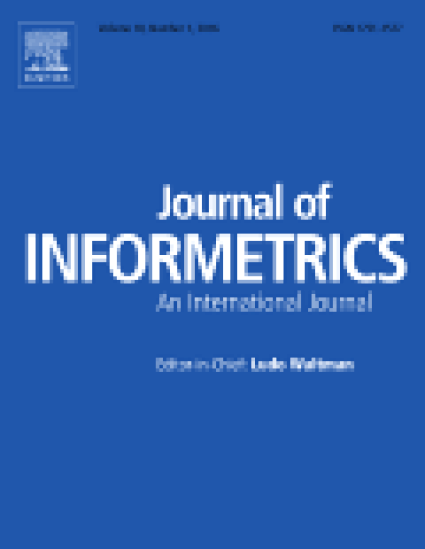
Article
Which percentile-based approach should be preferred for calculating normalized citation impact values?
Journal of Informetrics
(2013)
Abstract
For comparisons of citation impacts across fields and over time, bibliometricians normalize the observed citation counts with reference to an expected citation value. Percentile-based approaches have been proposed as a non-parametric alternative to parametric central-tendency statistics. Percentiles are based on an ordered set of citation counts in a reference set, whereby the fraction of papers at or below the citation counts of a focal paper is used as an indicator for its relative citation impact in the set. In this study, we pursue two related objectives: (1) although different percentile-based approaches have been developed, an approach is hitherto missing that satisfies a number of criteria such as scaling of the percentile ranks from zero (all other papers perform better) to 100 (all other papers perform worse), and solving the problem with tied citation ranks unambiguously. We introduce a new citation-rank approach having these properties, namely P100. (2) We compare the reliability of P100 empirically with other percentile-based approaches, such as the approaches developed by the SCImago group, the Centre for Science and Technology Studies (CWTS), and Thomson Reuters (InCites), using all papers published in 1980 in Thomson Reuters Web of Science (WoS). How accurately can the different approaches predict the long-term citation impact in 2010 (in year 31) using citation impact measured in previous time windows (years 1 to 30)? The comparison of the approaches shows that the method used by InCites overestimates citation impact (because of using the highest percentile rank when papers are assigned to more than a single subject category) whereas the SCImago indicator shows higher power in predicting the long-term citation impact on the basis of citation rates in early years. Since the results show a disadvantage in this predictive ability for P100 against the other approaches, there is still room for further improvements.
Disciplines
Publication Date
October, 2013
Citation Information
Lutz Bornmann, Loet Leydesdorff and Jian Wang. "Which percentile-based approach should be preferred for calculating normalized citation impact values?" Journal of Informetrics Vol. 7 Iss. 4 (2013) Available at: http://works.bepress.com/jwang/12/
